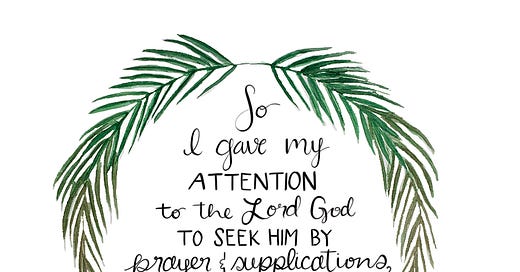The purpose of me writing these devotionals is not to exhaustively detail liturgical practices, church history, or Scripture. I’ve done my best to read and research the church teachings before writing my little devotionals, but I recognize that I am writing from the perspective of a Christian who is still learning daily.
I do not presume to know everything and I am sure there are many people who are well versed in theology that could write better devotionals. I am simply writing these devotionals because I love Jesus and his mercy has touched my heart.I hope that even in my limited understanding and attempt to work through Scripture over the next 40 days with you, that Christ would be honoured and truth would be evident. Thank you for your grace and understanding as you read these devotionals, even if I make mistakes.
—Kaelynne
This one is a bit long as I attempt to explain a brief background of Ash Wednesday. Don’t worry, not every email will be this long! Feel free to skip or skim or just look at the art—I won’t be offended.
The Significance of Ash Wednesday
Ash Wednesday is the first day of Lent, the 40-day period of preparation leading up to Easter. These 40 days are a time of fasting for the church, which reminds us of Jesus' period of fasting in the wilderness.1
Ash Wednesday has this name because of the ashes placed in the sign of the cross on our foreheads in the liturgical service.
The ashes remind us that we are "dust, and to dust you shall return"2, they remind us of our mortality. They also draw our thoughts back to the hope we have in our new life in Christ through our baptism.3 In many churches, the sign of the cross on the forehead was used at baptism—only it was an anointing of oil instead of ashes.
Christ calls us to repent of our sins and follow him.4 In the Old Testament, ashes were used as a sign of repentance5 and so we too can respond to the call for repentance during Lent. We use this time to prayerfully prepare our hearts so that we may rejoice all the more fully when Easter comes; hopefully with a deeper appreciation of Jesus’ sacrifice for us.
A Sacrifice for Lent
Traditionally, the church spends this season in intentional prayer, fasting and acts of charity as a way of preparing our hearts for Easter:
By fasting or giving up something for Lent, we acknowledge and repent of the ways in which we have chosen to turn our hearts away from God.
By setting aside time to pray, we intentionally turn our hearts back to God.
Through acts of charity, we look for opportunities to show love and generosity and give the gift of God’s love to others.
Intentional Awareness of God’s Presence
Fasting, prayer and acts of charity are not just rituals we do without meaning or as something we do just to "check off a box". Ultimately, we do these things as an opportunity to honour God's presence in our life as we grow in our love for him.
We see this as a time to "present your bodies as a living sacrifice, holy and acceptable to God, which is your spiritual worship."6 Whatever your sacrifice might be this Lent, do it in remembrance of the sacrifice of Christ.
Preparing Our Hearts
Today, we can ask God to show us ways in which we have turned our hearts away from him and are in need of repentance. We can pray that God would give us an opportunity to show the love of Christ through our thoughts, words and actions.
A note about today’s art:
The ashes which are used on Ash Wednesday are burned from the palm fronds used the previous year on Palm Sunday. This piece of artwork shows these palm branches transitioning from life to death, and ultimately to ashes.





Thank you for sharing! Great art also.
This is delightful to read. Thank you, Kaelynne!